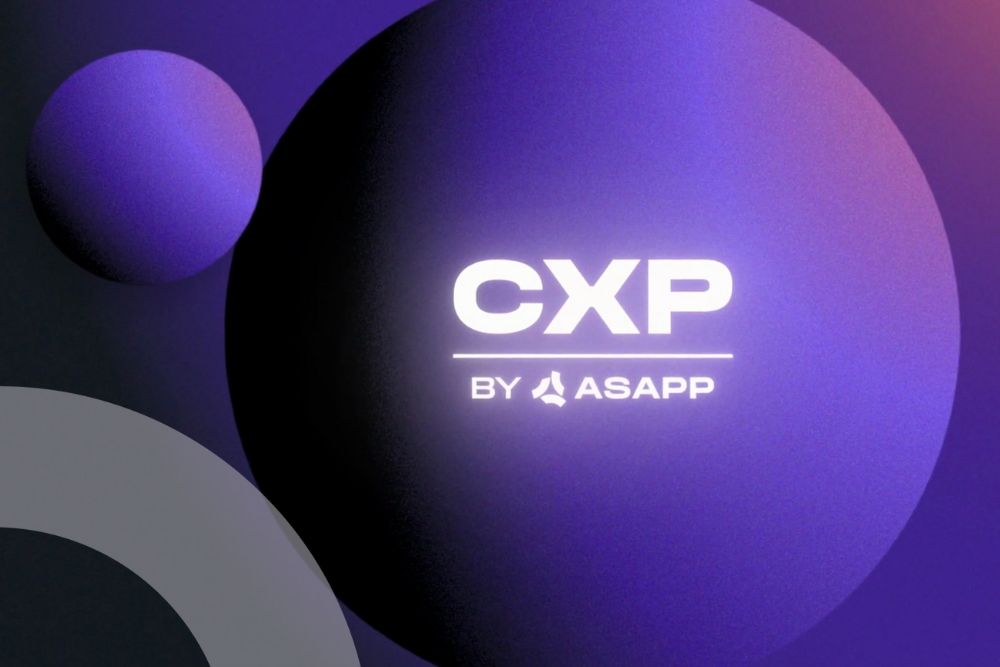Chris Arnold

Chris Arnold is the VP of Contact Center Strategy at ASAPP. He works with customers like JetBlue, Dish, and others to implement technology to improve engagement, lower costs and increase agent efficiency. Prior to ASAPP, Chris spent 20 years leading contact center strategy and technology implementation for Verizon and Alltel, leading staff operations, and managing desktop automation and augmentation
From models to memory: The next big leap in AI agents in customer experience
This is part of a blog post series focusing on the AI usage gaps identified within the MIT NANDA report, The GenAI Divide: State of AI in Business 2025.
A recent MIT NANDA report, The GenAI Divide, noted an interesting gap in AI usage. Among the companies surveyed, 90% of employees are using consumer AI tools in their work. But only 40% of companies have purchased an official LLM subscription.
That discrepancy isn’t a simple case of cost-conscious budgeting. It all comes down to how the employees are using the AI—and where they run into its limitations. According to the report, employees will use an AI tool for brainstorming and other low-stakes tasks, but abandon it for “mission-critical work due to its lack of memory.”
Without memory, AI tools aren’t much help with complex enterprise workflows. In the contact center, that means they start every interaction from scratch. They can’t tailor their responses based on all of the relevant context. And they can’t learn, adapt, or evolve.
Understanding AI memory
Memory is a critical part of what allows an AI agent to retain context, recognize patterns, and adapt over time. The larger and more relevant the memory is, the better an AI agent will become at personalizing service and evolving as conditions change.
On their own, large language models (LLMs) can’t retain new information. So, memory must be added through other components in the agentic platform. It’s helpful to think about this memory in two broad categories: short-term memory and long-term memory.
Let’s take a closer look at these categories of memory in the context of agentic AI for customer service.
Short-term memory
An AI agent’s short-term memory temporarily holds information during a customer conversation. It can include data retrieved from other systems, like the customer’s account details, as well as relevant information from what the customer has said. The ability to hang onto this information provides consistent context for multi-turn conversations. That leads to better customer service and a higher resolution rate.
The amount of information an AI agent can temporarily hold is called the context window. It’s like a rolling buffer that holds a limited amount of recent data. As the conversation progresses, new data is added, and some data drops out. The size of the context window and how it’s optimized determine how long the conversation can continue before the AI agent loses information from earlier in the exchange. Hold too little information at a time, and the agent lacks what it needs to resolve the customer’s issue and must ask for the information again. But overfill the context window, or fill it with the wrong information, and that can degrade the AI’s decision-making.
Engineering and optimizing the context window is a hot topic in AI agent development right now because it has an enormous impact on the agent’s performance.
Long-term memory
When a customer conversation ends, the information in the context window does not persist. But some data from each interaction would be useful to have long-term. Storing data for future reference is the domain of long-term memory, which allows an AI agent to store and retrieve information from previous interactions and use it to provide more personalized service to the customer it’s currently interacting with.
In addition to general information like definitions and rules, long-term memory can store task-related procedures that reduce computation time and allow the agent to respond faster to specific inputs. Long-term memory can also log key elements of the customer’s behavior, the agent’s actions, and the interaction’s outcomes in a structured format that the AI agent can access during future customer conversations.
For example, the long-term memory for an AI agent at an airline might include nuanced information about a frequent flyer’s seat preferences—window when traveling alone, but aisle when traveling with her son. After retrieving that information, the AI agent could ask proactively about booking the aisle and center seats for this family trip.
In this way, long-term memory will enable a new level of personalization and allow the AI agent to adapt and evolve over time. In practical terms, this kind of long-term memory is in the early stages of development for contact center AI agents. But more sophisticated memory architecture is coming in the near future.
Why AI memory matters
Memory isn’t just about storing information. It’s about creating systems that can retrieve information from earlier in the conversation or even from past interactions, determine its relevance to the current moment, and use it as context to adapt and provide better service. Optimization of both short-term and long-term memory will make the next generation of AI agents far more effective and useful. It will enable more meaningful and satisfying experiences for customers, and expand the AI agents’ ability to work autonomously and adapt intelligently to improve performance over time.
That’s why memory will become a key differentiator that sets top-tier AI agents apart.
How AI memory affects customer service
The quality of an AI agent’s memory management can either elevate your automated service, or leave customers disappointed. As vendors continue to optimize their agents’ memory, here are some of the benefits you can expect.
Improved efficiency and satisfaction
The more an AI agent’s short-term memory is optimized, the more efficient and reliable it becomes. It won’t need to ask the customer to repeat information, even late in a very long, complex conversation. It holds enough information to keep the interaction flowing toward resolution. That reduces customer effort and increases satisfaction.
More personalized customer service
The AI agent will use data from past interactions, transactions, and other customer behavior alongside account details and preferences to customize responses and recommendations. In effect, the information pulled from long-term memory will serve as additional data points for the AI to predict customer behavior and more precisely adapt to each unique customer.
Continuity throughout the customer journey
Through strategic storage and retrieval of data from past interactions, an AI agent will build on previous conversations rather than starting each one from scratch. That saves customers time and effort and makes them feel known and understood. Rather than disconnected interactions, the experience will feel more like a persistent relationship, which will deepen the customer’s loyalty to your brand.
Increased trust and engagement
Personalized service makes customers feel like your brand cares. That instills confidence and builds trust. And it makes customers more likely to engage and share relevant information in their journey with your brand. That information will fuel even deeper personalization.
What customer service leaders should look for now
We’re still in the early days of focused research on memory management for AI customer service agents. So, many of the possibilities discussed above aren’t fully developed yet. But you should still probe for information about a vendor’s roadmap for developing their AI agent’s short-term and long-term memory. Specifically, ask about their plans and anticipated timelines for these capabilities.
- What’s your timeline for the agent to be able to retrieve relevant information about a customer from past interactions and use it as context in the current interaction?
- What kind of information are you planning to make available to the AI agent from previous interactions (customer’s tone, stated preferences, purchase history, issues, resolutions)?
- Will your AI agent be able to aggregate information across channels, including both digital and voice?
- How will your AI agent share aggregated information as context with human agents?
- How will you ensure transparency into what data is stored and how the AI uses it?
Memory as a key differentiator—and value driver
Improvements in LLMs have slowed, and that plateau will persist. But the capabilities of AI agents will continue to expand, in large part through advances in memory optimization. Top solutions are already beginning to support proactive problem resolution and hyper-personalization to deepen customer relationships, build loyalty, and fuel business growth.
AI agent platforms with a sophisticated memory architecture will soon capture a gold mine of critical structured data about your customers. That data will shift the role of the contact center from a mere support desk to a customer intelligence hub that delivers value throughout the enterprise.
The next wave of AI agents will use memory to plan complex workflows, anticipate customer needs, and capture knowledge that improves service and organizational agility. Enterprises that prioritize robust, adaptive, and privacy-conscious memory management in their AI agent investments today will gain an unprecedented edge. The time to embrace those priorities is now.
The road ahead: What the next year will bring for AI in CX
We all hear the same thing about the future of the CX landscape every year, that it’s poised for a dramatic transformation. Most years, the steady evolution of CX tech delivers real gains for customers and businesses but falls short of true transformation. But this year seems different. As CX leaders embrace generative AI, the role of contact centers—and the agents who work within them—will undergo a profound shift. The key to navigating this colossal change will be effectively using the full range of genAI’s capabilities to improve both customer and employee experiences.
The growing complexity of AI use cases for CX
Over the next year, two things will happen in tandem – new CX use cases for AI-native solutions will continue to emerge and enterprises will shift focus to improving data curation. A whopping 95% of customer service leaders say that improving analytics, intelligence, and quality capabilities will be a bigger priority in 2025. That focus will lead to better, cleaner data. And with better data, new AI solutions will be able to tackle more complex customer interactions.
AI is already automating highly repeatable human-assisted transactions. The capabilities that power this automation, such as summarization, will be commoditized and widely deployed. At the same time, more advanced capabilities will be developed. As AI automates more complex and time-consuming tasks, the role of humans in the contact center will evolve to focus on critical interactions that build customer relationships and strengthen the brand.
Productivity improvements are already obvious early wins with AI, and that will continue. But businesses will lean into generative AI’s capacity to personalize experiences at scale. The vast majority of CX leaders (90%) say that determining the best use cases for AI will be a key focus in 2025. The blend of efficiency and personalization that new use cases offer will finally begin to transform the way companies execute across the entire customer journey.
From legacy tech to LLMs – and beyond
Legacy technologies simply aren’t up to the task of delivering the kind of service consumers expect these days. Chatbots, websites, mobile apps, and IVRs are all okay for very specific tasks, but their inability to support the dynamic, complex, and sometimes emotive needs of the customer are where LLM-native AI is a massive leap forward – when it’s deployed thoughtfully.
Here’s the catch. An open-source LLM alone cannot manage the complexity of your customer interactions. That’s a lesson some businesses have learned the hard way with some very public failures. But a system of models grounded on your business lexicon and integrated with your company’s backend systems is incredibly powerful at achieving first contact resolution. And this is where leading companies are headed, fast.
If you haven’t already moved in this direction, you would be well served to get started now by finding an AI solution partner who can implement a range of use cases tailored to your business. You can start simple and deploy use cases of increasing complexity over the next couple of years. This iterative process will ensure ongoing learning and deliver transformational customer, employee, and shareholder value.
The evolving role of human agents
In my experience, no one knows the best and worst of your company better than the agents in the contact center. They talk to the customers that use your products and services all day, every day. So, they know what’s working and what’s not. That makes them a valuable resource, one that too often remains untapped.
As the role of AI expands to handle more routine work, the role of human agents will evolve in ways that create opportunities to leverage their unique knowledge and perspective. Nearly 89% of customer service leaders say that the typical agent of the future will handle complex customer service and support interactions. Other likely aspects of the evolving agent role include participating in client retention and winback efforts (68%), contributing to knowledge management (66%), and collecting and sharing customer feedback (66%).
The expertise of your best agents makes them uniquely equipped to train and supervise AI in a way that will completely change how your contact center operates. Not only will AI resolve the systemic issues that make contact center work incredibly difficult and expensive, but it will also empower companies to create historically high efficiency and personalization. That shift will do a lot to address consumer dissatisfaction, which creates massive headwinds to growth and profitability.
To achieve this transformation, CX employees must be part of the solution from day one. It will be crucial for businesses to involve them directly in AI adoption and expansion. While some jobs, over time, will be reduced or even eliminated, new roles will also be created. Educating employees on the importance of their role with AI, upskilling those tasked with making the technology successful, and evolving incentive programs will accelerate benefits to the customer and company.

The transformational opportunity for CX leaders has never been this great. But it depends heavily on balancing the technology with the people in the right way.
- Chris Arnold, VP of Contact Center Strategy, ASAPP
Human involvement will be crucial for improving the performance of AI solutions and for ensuring safety and data security. Businesses that successfully evolve a subset of agent roles to provide supervision, human reasoning and judgment, and advanced triage will be better positioned to deliver safe and highly efficient first contact resolution at scale using AI.
Not all tech providers are equally mindful of the need for this balance of humans and AI. You’ll need to choose a partner that acknowledges the importance of people and process, rather than simply providing software. How technology is deployed matters as much as the technology itself, maybe more in this case.
Navigating this new path forward
There is a tremendous amount of noise in the market right now as companies in every industry develop their CX strategy for generative AI. This has created a massive amount of marketing from technology providers that serve contact centers, many of them painting bolt-on solutions as truly AI-native. That can make it difficult to evaluate and compare solutions and vendors. For long-term value, it will be important to identify the vendors who have deep expertise in AI and CX and have built and deployed AI-native solutions successfully. So, you’ll need to ask tough questions of vendors prior to signing a contract.
As you add generative and agentic AI solutions to your mix, don’t be afraid to start small with a plan to learn and iterate quickly. In the contact center, small changes can lead to massive benefits. Take the time to be proactive and thoughtful in choosing the right use cases to target first. Consider where the AI is strong out of the box, what data sources are available, and where pain points can be quickly eliminated. This requires more thought than simply looking at the top five call drivers. You’ll get there more quickly if you leverage the inherent strengths of the AI and invest the time and energy into creating space for the solution to learn and do what it’s built to do – meet the needs of your customers in the most effective and efficient manner possible.
The shift from cost center to value center
As we look toward the future, it's clear that the contact center is undergoing a fundamental shift. The days of seeing contact centers as mere cost centers are numbered. In the new AI-powered world, contact centers will become value centers that contribute directly to customer loyalty, retention, and revenue generation.
Traditional metrics like Average Handle Time (AHT) and First Contact Resolution (FCR) will be replaced by more holistic measures that align with the new workflows and possibilities created by AI. These new metrics will shift the focus to omnichannel resolution, customer lifetime value, and concurrency.
As more human agents shift into new roles supervising the work of autonomous AI agents, concurrency improvements will be dramatic, even with voice. The gains that will bring in productivity and efficiency will dwarf the incremental improvements we’ve seen with other recent technologies. We’re on the cusp on a radical change that will require a new approach to measuring performance. The new metrics will help drive contact centers to deliver exceptional customer experiences at scale, improving both the top and bottom lines of the business.
Thriving in this rapidly evolving landscape
The next year will see significant advancements in the contact center industry. AI will continue to reshape the way we deliver service, while human agents will play an even more critical role in driving customer satisfaction and brand loyalty. By embracing AI, empowering agents, and focusing on personalization and efficiency, businesses can position themselves to thrive in this rapidly evolving landscape. The future of customer service is here, and it’s one where technology and humans work together to deliver outstanding experiences.
The hidden ways AI-driven speech transcription and analytics improve CX performance
I have spent virtually all of my professional career working with CX and IT leaders in Fortune 500 companies. These companies are investing millions of dollars annually in speech analytics that have maxed out the benefits they can deliver in improving quality management.
Many companies only transcribe a small fraction of their calls and only score a smaller number of those. And often the recordings are batched and stored for later analysis. Having to sift through the data, trying to pull out relevant information, and coaching agents after-the-fact with that information is cumbersome, incomplete, and moves the needle incrementally in terms of improvement.
When I was leading technology operations at contact centers, a consistent theme when re-evaluating our speech analytics toolset was “There are no new insights into what customers are contacting us about. We get reports—but there’s nothing really actionable—so nothing changes.”
We should be asking more from our speech analytics and transcription technology.
Now we can. Advancements in artificial intelligence (AI) raises the bar for what we should expect from our sizable annual investment in this technology.

AI-driven transcription and analysis of every call helps you optimize performance—and gives you a wealth of customer insight.
- Chris Arnold, VP, Customer Experience Strategy, ASAPP
AI quietly powers transcription and speech analytics in real-time and enables us to use the results in hidden ways we did not even realize possible. Examples include:
- Empower agents with coaching support and tools to resolve issues faster
- Get voice of the customer (VoC) insight from 100% of calls
- Analyze customer sentiment in real-time and use machine learning to predict customer satisfaction scores as a call transpires
Supercharge your agents using real-time transcription
Real-time transcription can serve as fuel for your voice agents and accelerate CX performance. Since the majority of customers still contact companies by phone—and voice is the most costly channel—isn’t this where we should be focused?
While it is important to optimize your operations through both live agent and self-serve digital channels, phone calls will continue. Let’s use AI to super-power our agents to make the high-volume voice queues as high performing as possible.
Real-time transcription paired with real-time AI-driven analysis makes it possible to prompt agents with suggested responses and actions based on machine-learning. Additionally, real-time transcription enables automation of thousands of micro-processes and routine tasks, like call summaries.
One of the largest communications companies in North America uses AI to automate the dispositioning of notes at the end of agent calls and realized a 65%[1] reduction in handling time for that specific task. At ASAPP, we have seen large CX organizations who leverage this modernized approach to transcription at scale, reduce their overall CX spend by 30% which translates into hundreds of millions of dollars annually.
Fuel CX operations with voice of customer analysis for 100% of calls
In and of itself, transcription doesn’t make front page news. Very often it’s an expensive component of contact center technology that’s not providing a return on that investment. For instance, most companies are only transcribing 10-20% of their calls due to costs and as a result, business decisions are made without data from more than 80% of customer interactions. That’s not even close to a complete representation of everything happening across the totality of their CX operations.
Today, it’s realistic to transcribe every word of every customer interaction. You can leverage AI to analyze those transcriptions and make real-time decisions that empower agents and improve customer experience in the moment. Highly accurate transcription, coupled with closed-loop machine learning takes the customer experience to another level.
Predict CSAT/NPS with real-time customer sentiment analysis
Every CX leader strives to delight customers—and wants to know how they’re doing. Most use Customer Satisfaction (CSAT) or Net Promoter Scores (NPS) surveys to capture feedback. Yet average survey response rates are between 5% and 15%, depending on the industry. With machine learning, you can now use your transcriptions and speech analytics to predict the sentiment (CSAT or NPS) of every conversation. It’s the equivalent of having the silent 90% provide feedback for every interaction.
Real-time analysis of transcription can discern intent and automatically categorize each customers’ reason for contacting your company. This will give you a deep understanding of exactly what customers are calling in about—and how that compares over time. You can also apply real-time trend and anomaly detection to identify issues and quickly address them before they become catastrophic.
This real-time capture of the voice of the customer is massively valuable to not just contact center leaders, but also Product, Marketing, and Sales teams as well.
Conclusion: Let speech analytics lead the way
Artificial intelligence makes our transcription and speech analytics investment actually meaningful and allows us to make material improvement in CX operations.
If you don’t know the specific drivers behind the interaction metrics within your company, it’s hard to make anything other than incremental changes in your CX programs.
AI lets us analyze every detail from the tens of millions of interactions that occur every year. Not just the metrics—call duration, wait times, etc. but the key drivers behind those metrics. What were the reasons for unexpectedly long handle times… were agents clicking around the knowledge management database trying to find answers? Or how about unbiased opinions on cancel rates… were they due to a product flaw or issues with customer service? Could better save approaches have been used? Or what may have caused the customer sentiment to shift during the interaction?
Imagine capturing 100% of every single customer interaction, whether voice or digital. Imagine having objective insight into drivers behind your contact center metrics. Imagine being able to do that in real-time.
You no longer have to only imagine. No more waiting around for partial transcripts and partial answers. No more manual, subjective scoring of a tiny sampling of your total interactions. The future is here, and we can find it in real-time, automated transcripts and speech analytics:
- Supercharge agents with real-time desktop intelligence
- Identify coaching needs in the moment—get it right for the customer the first time
- Predict CSAT and NPS on 100%, of your interactions
- Gain real-time insights—at a glance understanding of why customers are calling
Real-time transcription, AI-driven analytics, and the ability to quickly act on insights can be your hidden weapon to accelerate transformational change in your contact center.
The richest CX data on earth isn't being mined
In recent weeks, I’ve had the opportunity to discuss technical innovation with CIOs at several Fortune 500 organizations. I’m always fascinated to hear the story these leaders report how their corporation’s technology and operating framework came to be. Inevitably, every CIO notes how much time and energy their teams have invested in their technology stack, working through many levels of complexity. And they share their frustration at how difficult it is to gain anything more than incremental improvements year over year.
“They’ve been telling me the same thing for five years”
A common challenge faced by most senior leaders is the absence of new insights into what’s driving their CX outcomes. While there are terabytes of data flowing through these businesses, the use of legacy reporting and analytics methodologies renders scant new actionable insights. One CIO told me he no longer asks his teams to provide insights into customer contacts because, “I already know what they are going to tell me because they have been telling me the same thing for the last 5 years.” Antiquated methodologies can be used to report historical performance, but fall very short of providing the customer insights needed to deliver material value.
There’s gold in your data
Intelligent data processing translated into actionable insights can enable even the largest organizations to respond rapidly to ever-changing market dynamics. Most Fortune 500 companies are sitting on a mountain of data and extracting little more than information for historical scorecard reporting. This data is a valuable asset that could drive significant business efficiencies through the application of well-developed artificial intelligence.

Data from all your interactions with customers is a rich source of insights that can significantly improve performance across your organization.
Chris Arnold
ASAPP helps companies mine this gold
Leveraging native, self-learning artificial intelligence enables the largest companies in the world to gain new actionable insights into what’s driving their business outcomes. The ASAPP AI platform provides insight into contact drivers, customer intent and sentiment, trends, effectiveness of promotional offers. and opportunities for enhanced automation and self-service. Machine learning models deployed in both voice and digital environments offer real-time as well as historical insights that lead to double-digit OPEX savings, incremental revenues, and enhanced customer and agent experiences.
Turning insight into action
I work with F500 customers daily in modernizing how they use real-time and historical data to reimagine their CX operations. By deploying the ASAPP AI Native® platform, they are immediately able to identify common topics raised by customers, understand root cause, and see what actions were taken by agents to resolve customer issues.
Sales and Marketing teams can use these insights to drive upsell/cross sell initiatives, promotions to improve loyalty and retention, and enhanced personalization. The Data Science team can leverage agent insights to inform automation flows that will reduce the level of effort for customers to get answers to questions. And, the digital team can use them to update self-service content.
Increasing productivity
These insights also help contact center operations directly. Leveraging data-driven AI, one customer has more than doubled their productivity, with 2.2X increases in resolutions per hour while also realizing a 7 percentage point increase in CSAT. Rather than simply using data for historical reporting, this F500 company is using data to create a leapfrog moment at a very challenging time globally.
Believing there are no new data-driven insights within the CX environment is a costly mistake. Continuing to leverage legacy methodologies will lead to outputs that offer little to address new business challenges. Actionable insights are there, often hiding just below the surface. Identifying and taking action on these insights across the entire organization will result in employees working on critical areas of opportunity rather than old assumptions.












